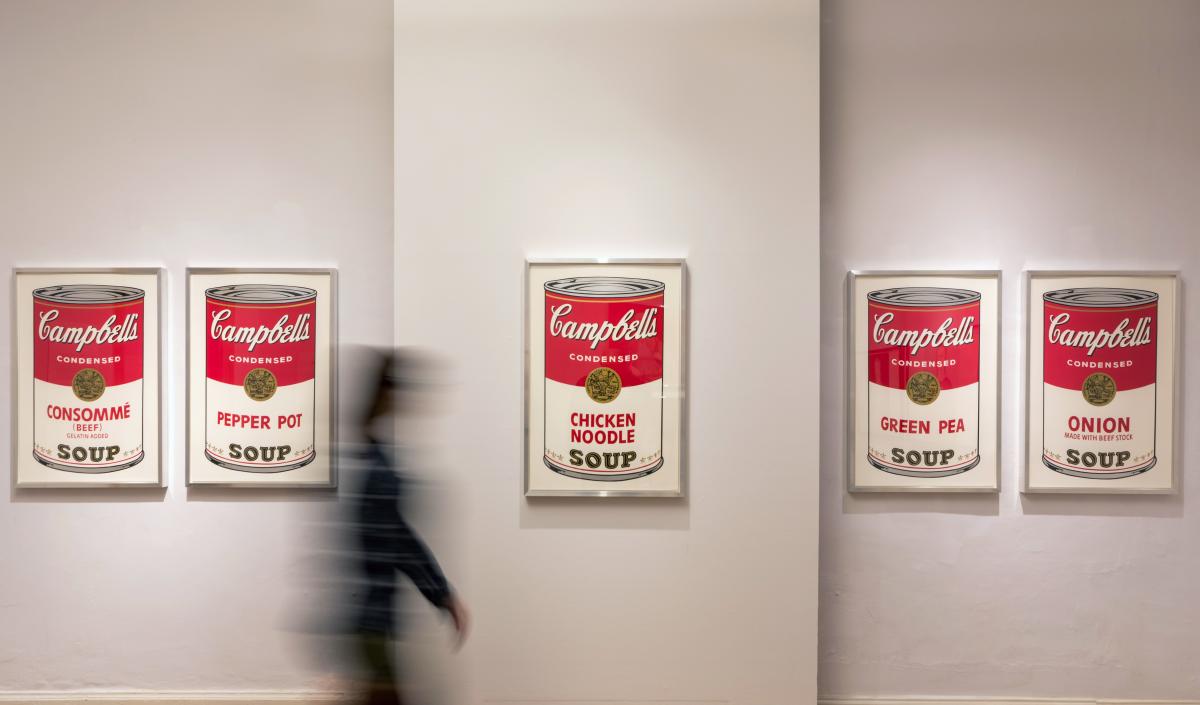How to minimise the risks of passion investments

In the first of a two-part special on passion investing, Lowrie Robertson, a paralegal in the Art Law Group at Slaughter and May, examines the relationships and responsibilities between investor, broker and seller, and how to conduct due diligence when collecting vintage wine, fine art, luxury properties and classic cars.
A classic car, a case of fine wine, a (near) priceless painting—what do these things have in common? While this may sound like a riddle or the set-up to a bad joke, “passion investments” are increasingly on trend as wealth is increasingly allocated to more diverse assets. The rarity of non-traditional financial asset classes like fine art, classic cars or even stamps, as much status symbols as luxury investments, along with a shift towards more holistic investment strategies in the wealth management industry have helped to drive this change.
Passion investments are rarely motivated by money alone. Owning a passion asset is, at least according to Coutts and HSBC's private banking department, as much about the joy derived from that particular asset as its financial possibilities. Certainly, artworks and cultural property are often emotional and social investments that can provide long-term wealth protection and benefit multiple generations. From the theatre of a headline-grabbing auction to the prestige of owning a particular work, there is undeniably a certain romance to collecting art.
 That said, investing in art is not easy and, as with other passion assets, can involve a high level of risk. Art markets in particular are substantially different to other investment markets. They are small, opaque and controlled by a few powerful intermediaries. A painting does not have the income-producing stream of company shares. Illiquidity and subjectivity of valuing are also issues. Furthermore, the lack of any database or register of art sales and ownership compromises the available market intelligence and makes it harder to identify risks in art investment. Especially in comparison to financial institutions, it is a mostly unregulated industry and it is therefore little wonder that art and finance can make for uneasy bedfellows.
That said, investing in art is not easy and, as with other passion assets, can involve a high level of risk. Art markets in particular are substantially different to other investment markets. They are small, opaque and controlled by a few powerful intermediaries. A painting does not have the income-producing stream of company shares. Illiquidity and subjectivity of valuing are also issues. Furthermore, the lack of any database or register of art sales and ownership compromises the available market intelligence and makes it harder to identify risks in art investment. Especially in comparison to financial institutions, it is a mostly unregulated industry and it is therefore little wonder that art and finance can make for uneasy bedfellows.
Avoid being the punchline
In the art market, the burden is on the buyer (or the investor) to establish that the work he or she buys has been legally obtained. It is therefore crucial to know as much as possible about an artwork's ownership history before buying. There are unfortunately many examples of fraud in the art world, from the Old Masters forgery scandal to the Metropolitan Museum of Art's public return of a bull's head sculpture to Lebanon after it was revealed that the sculpture had been stolen. Even more alarming is the link between illicitly traded antiquities and the funding of terrorist activities.
However, there are practical steps an investor can take before purchasing or investing in a passion asset, which may help to minimise the hazards involved.
Outlined below is a checklist of precautions and considerations to address before making a passion investment. Allied with experienced legal counsel, these can help inform investment decisions and mitigate risk.
Due diligence: Investing in art and other passion assets
Undertaking due diligence is vital for the investor. However, public information about an artwork may be limited. Most sales are kept private and at times it is impossible to know the buyer, the seller or even the work's final price. Therefore it is essential to gain as much information as possible about an asset before purchase or before investing in a fund. When investing in an expensive asset like a high value art piece, legal knowledge and expertise can help to guide through the complex due diligence process, as well as providing a neutral third party.
 1. Know your asset
1. Know your asset
It may seem obvious, but understanding the asset is important for ensuring legal title to a valid investment product and for planning a strategy that minimises the risk of losing money. Without a thorough understanding of the asset and the potential associated costs and issues, any strategy will be flawed from the start.
The investor should establish details with the seller including the condition of the asset, whether any repairs are required, the costs of previous annual expenditures for the asset. If possible, the asset should be inspected first-hand by the investor or by his trusted adviser and by an expert selected by the investor.
Additionally it is important to know if there are any restrictions or contractual arrangements which could affect how prevent the asset from being transferred to the investor or otherwise restrict how the investor uses the asset.
In the cases of artworks, it is also important to know if the original artist is still alive or if the work is within copyright, as copyright may not be transferred upon sale.
2. Know your seller
Having a good understanding of the seller (whether they are an auctioneer, a private gallery etc) and their position in the market is just as important as knowing the asset.
The investor should ascertain how well-established the seller is in their particular industry, such as looking at online testimonials or checking if the seller has any relevant industry qualifications or accreditations. Buying from a seller who is a member of a recognised trade association, such as the British Antique Dealers' Association, means it is more likely that the seller will have internal codes of practice and safeguards in place to protect the purchaser.
If the seller is insolvent at the time the investor purchases the asset, it may be possible for the seller's creditors to seize the asset from the investor, even if all monies have been paid to the seller. Where the seller is a businesses, enquiries can be made through Companies House and the Central Index of Winding-Up Petitions by the investor or through a lawyer.
To provide the best level of protection, ask the seller to provide a signed, written statement setting out the seller's representations and warranties on sale.

3. Anti-money laundering regulations
New anti-money laundering regulations (the “AML Regulations”) in the UK require art dealers (including auction houses) in high value goods to set up policies, controls and procedures to mitigate and manage the possibility of money laundering and terrorist financing. Complying with this legislation should help to protect investors from investing in fraudulent assets.
If the seller is a “High Value Dealer” for the purposes of the AML Regulations, check if there evidence that they comply with anti-money laundering provisions and the Proceeds of Crime Act 2002, for example in a policy statement.
4. Provenance and authenticity
Finding out that an expensive piece by a celebrated artist is actually a forgery can be devastating. A high profile court case over a stolen cultural object can be just as damaging. Thorough due diligence, especially in relation to an artwork's provenance, is the best way for an investor to protect his or herself. If in any doubt about the veracity of an asset, instruct a lawyer to conduct due diligence, as a third party with specialist legal knowledge.
Any due diligence should include as many details about the artwork's provenance including when it was originally purchased, the work's country of origin, the date of exportation (and that there were no legal restrictions on export) and what the seller's provenance procedures were at the time of the acquiring the artwork.
The seller should also provide records relating to the asset's ownership history and supporting documents such as:
(i) Export licence;
(ii) Certificate of authenticity;
(iii) Whether the asset has been published in a legitimate source, such as an artist's catalogue; and
(iv) Any other relevant documents such as correspondence, estate inventories or wills.
For art assets, the artwork should be screened against applicable online databases of lost or stolen art, such as The Art Loss Register and the INTERPOL Database of Stolen Works of Art. Depending on the nature and origin of the work, other national or international databases may also be relevant.
5. Valuation
As there is no single consistent valuation framework for artworks in the market, it is important to know how comparable items in the market are valued. As with other investments, an artwork's value may go up or down between purchases and when it is re-sold.
The investor should research how other similar or comparable objects in the particular market are currently priced or recent sales prices for such works. The seller may be able to provide such information or consider consulting an art adviser who may have a more detailed knowledge of the relevant market.
 6. Using an art broker
6. Using an art broker
An art broker can provide specialist knowledge of a particular art market and expert advice on the artworks that would best suit a particular investor. The right professional can identify trends in the market and find investment opportunities that the investor might otherwise miss.
However, the art industry has its faithless servants. The ongoing saga between Swiss art dealer Yves Bouvier and Russian billionaire Dmitry Rybolovlev (to whom Bouvier who originally sold the Salvator Mundi painting before its record-breaking sale last year) is a good illustration of this point.
Courts have previously ruled that it is the collector's responsibility to verify the authenticity of a painting, even if it purchased by someone the collector trusted. Although under English agency law, an agent owes a fiduciary duty to a principal, including a duty to act in the principal's best interests and to not make secret commissions, it can be hard to prove that an art broker is an agent to the investor and owes those duties.
Similarly to knowing the seller, when engaging an art broker, adviser or intermediary, the investor should establish the broker's reputation and area of expertise and whether the broker has a standard contract for entering into a relationship. If so, before signing, a lawyer should read over the contract's terms and flag any potential issues.
It is best to enter into a formal written agreement between investor and intermediary. To ensure the highest level of protection for the investor, consider entering into a written agency agreement, which clearly sets out the duties that the broker will have as agent to the investor, such as not to make any secret commission.
Images: PA






